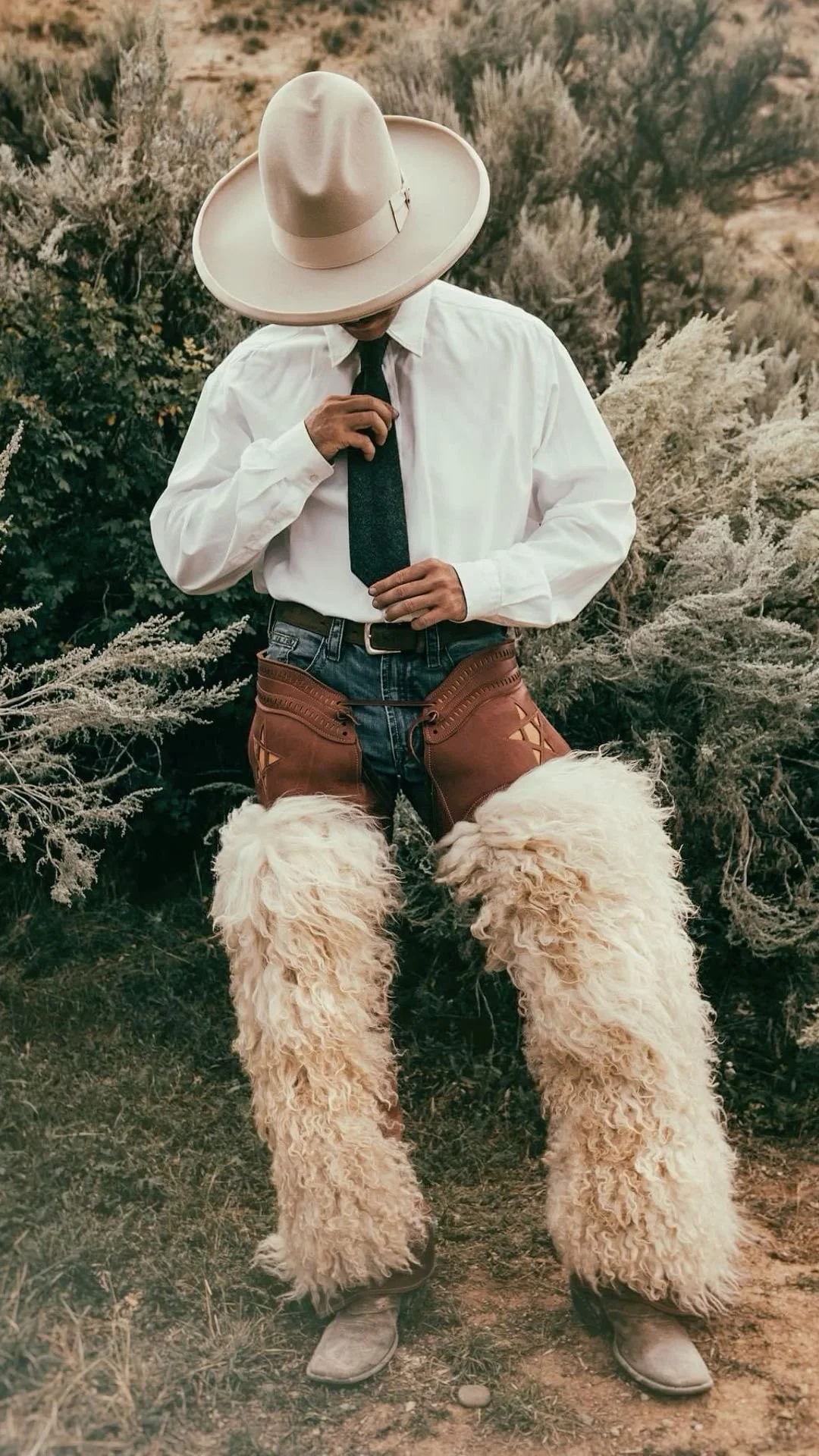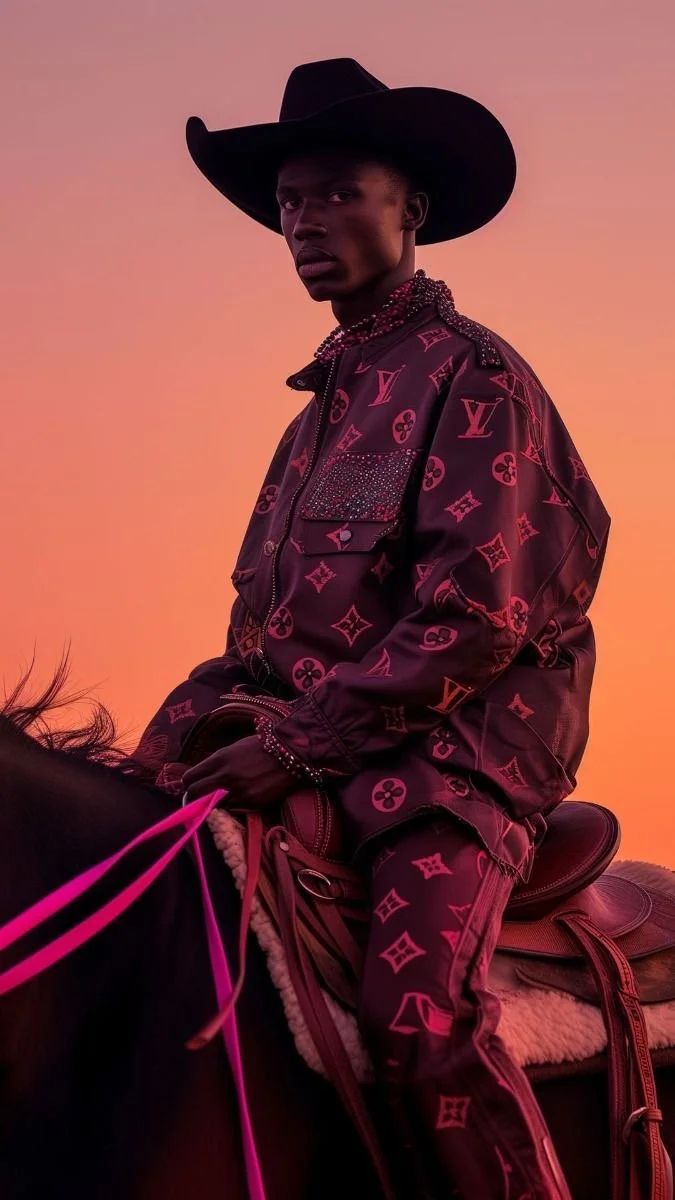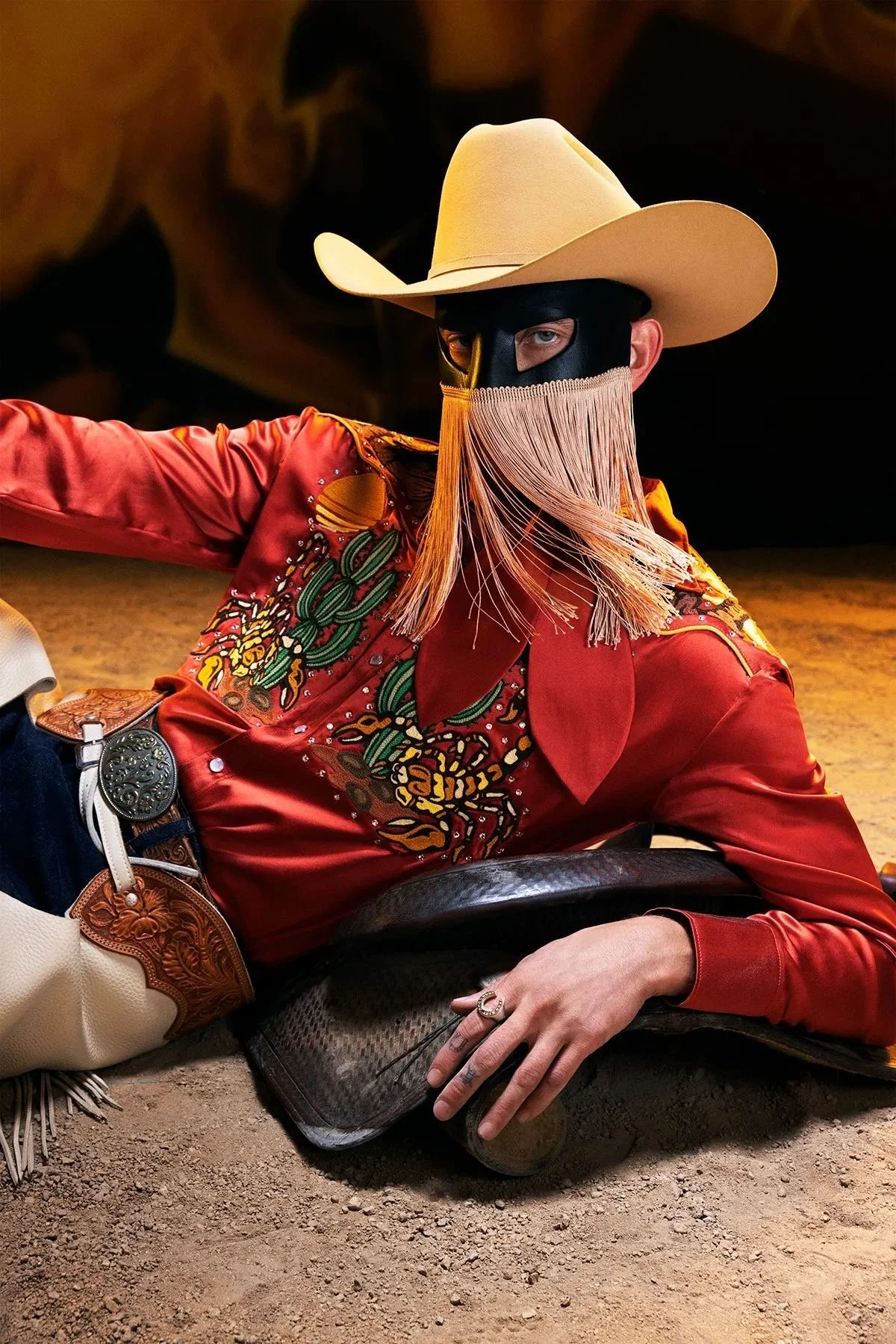The Future of Western Fashion in High Fashion and Pop Culture
Western fashion, with its rugged charm and quintessential Americana, has always been a fascinating touchstone for the fashion industry. In recent years, this once niche aesthetic has gained unprecedented momentum, influencing both high fashion and mainstream pop culture. With contributions from designers like Louis Vuitton, Kozaburo, and Versace, alongside cultural figures like Orville Peck, the Western aesthetic has transformed into a symbol of modern identity, rebellion, and nostalgia. To understand its trajectory, we must explore its historical origins, current manifestations, and the broader cultural phenomena fueling its rise.Photographed: Orville PeckThe Future of Western Fashion in High Fashion and Pop Culture
Western fashion, with its rugged charm and quintessential Americana, has always been a fascinating touchstone for the fashion industry. In recent years, this once niche aesthetic has gained unprecedented momentum, influencing both high fashion and mainstream pop culture. With contributions from designers like Louis Vuitton, Kozaburo, and Versace, alongside cultural figures like Orville Peck, the Western aesthetic has transformed into a symbol of modern identity, rebellion, and nostalgia. To understand its trajectory, we must explore its historical origins, current manifestations, and the broader cultural phenomena fueling its rise.The Roots of Western Fashion
The Western aesthetic traces its origins to the 19th-century American frontier, where practicality and durability defined clothing. Cowboy hats, denim jeans, leather boots, and fringed jackets were utilitarian essentials for ranchers, miners, and cowboys. Brands like Levi Strauss & Co. and Stetson capitalized on this rugged functionality, creating staples that endure in modern wardrobes.As the frontier mythos grew, Hollywood popularized Western style in the mid-20th century, with stars like John Wayne and Clint Eastwood embodying the archetype of the lone cowboy. This period cemented Western fashion as a cultural icon, though it often remained confined to niche or costume contexts. However, as fashion evolved, designers began mining these deeply symbolic elements, fusing Western motifs with contemporary design.Louis Vuitton: embraced Western aesthetics in its Spring/Summer 2019 menswear collection, helmed by Virgil Abloh. The show featured oversized cowboy hats, leather jackets with fringe detailing, and bold boots, juxtaposed with Vuitton’s luxury ethos. This collection brought the rugged, utilitarian ethos of Western wear into the global luxury conversation, proving its versatility and appeal.
Kozaburo Akasaka: A Japanese designer, has brought an avant-garde perspective to Western fashion. Known for his sleek reinterpretations of cowboy boots and denim, Kozaburo draws inspiration from the independent, free-spirited cowboy archetype. His designs, blending traditional tailoring with experimental silhouettes, show how Western elements can push the boundaries of contemporary fashion.
Versace: Took a different approach, infusing Western motifs with its signature opulence. In its 2022 runway show, Versace showcased fringed leather jackets adorned with gold embellishments and vibrant cowboy prints, marrying the ruggedness of the West with the brand’s glamorous DNA.Western Fashion’s High-Fashion Renaissance
In the last decade, Western fashion has been elevated into the realm of high fashion, thanks to visionary designers who reinterpret its elements for a modern audience. Beyond the runway, artists and cultural figures have played a pivotal role in propelling Western fashion into the mainstream.Orville Peck, the enigmatic masked country artist, has become a poster child for the new Western aesthetic. With his rhinestone-studded suits, fringed masks, and cowboy boots, Peck’s style draws from both the flamboyant traditions of country music and the inclusivity of modern queer culture. His influence has made Western fashion more accessible and relevant to younger, diverse audiences.Similarly, celebrities like Lil Nas X, with his viral hit Old Town Road, have embraced Western style as a form of personal and cultural expression. Lil Nas X’s 2019 Grammys ensemble, featuring a neon pink cowboy suit, pushed the aesthetic further into pop culture’s limelight.Western Influence in Today’s Pop Culture
Western fashion’s resurgence is deeply tied to its adaptability and the cultural narratives it evokes. Shows like Yellowstone and films like The Power of the Dog have reignited fascination with the West, bringing its aesthetic to a broader audience. In music, the fusion of country and pop by artists like Kacey Musgraves and the continued work of Orville Peck have kept the style relevant and evolving.Social media platforms like Instagram and TikTok have also amplified the trend, with influencers showcasing how Western elements can be integrated into everyday wear. Fringe jackets, cowboy boots, and wide-brimmed hats are no longer relegated to rodeos; they are staples of street style and festival fashion.The Future of Western Fashion
The future of Western fashion lies in its ability to adapt and transcend its roots while maintaining its iconic elements. Designers are likely to continue blending Western motifs with global influences, as seen in Kozaburo’s work or Louis Vuitton’s luxurious reinterpretations. Sustainability may also play a role, with a focus on handcrafted leather goods and heritage denim that align with the original utilitarian ethos of Western wear.Culturally, Western fashion will remain a powerful symbol of freedom, individuality, and nostalgia. Its enduring appeal lies in its ability to evoke a sense of adventure and rebellion while adapting to the modern zeitgeist. As long as designers and cultural figures continue to innovate and champion its aesthetic, Western fashion will remain a dynamic force in high fashion and pop culture.In the words of Orville Peck, “The cowboy isn’t just an American symbol; it’s a global icon of resilience and independence.” And as Western fashion continues to evolve, it will undoubtedly inspire the next generation of dreamers, rebels, and fashion pioneers.




